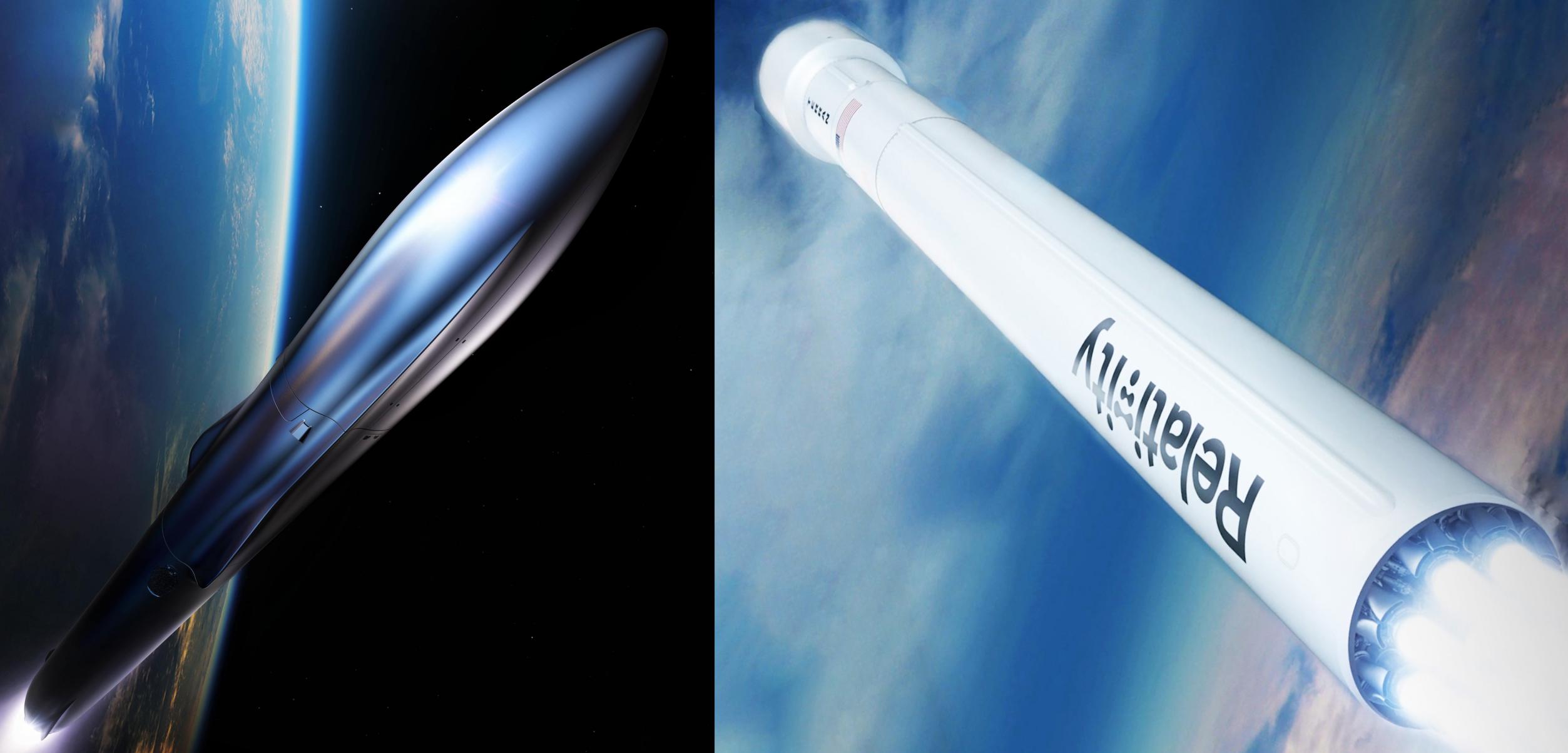
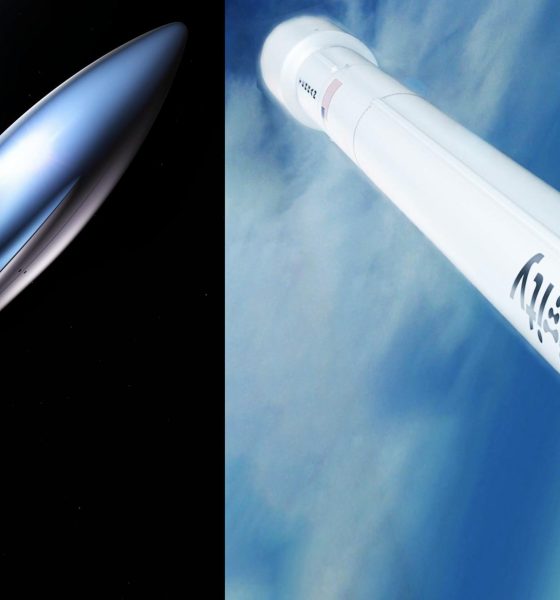
News
Relativity Space reveals plans to rapidly upgrade 3D-printed Terran 1 rocket
Relativity Space has announced that it will only launch the first version of its small Terran 1 rocket a handful of times before upgrading the vehicle in ways that will aid work on a much larger, fully reusable rocket.
Relativity co-founder and CEO Tim Ellis revealed the news in a recent interview, explaining that while the original Terran 1 rocket is still an integral part of the company’s vision and success, it will mainly serve as a bridge to the larger and more capable Terran R – a rare rocket with the potential to compete head-to-head with SpaceX’s Falcon 9.
“We’ve always envisioned Terran 1 being a development platform,” stated Ellis in an interview with Ars Technica. The Terran 1 rocket, which is thrust into orbit using nine proprietary Aeon-1 engines is designed to carry payloads into Low Earth Orbit (LEO). The first launch of Terran 1 is anticipated to take place by the end of 2022, with Ellis stating that Relativity is “definitely launching this year.” Terran 1’s first launch won’t carry payloads, indicating its experimental nature, but it will be serving as the startup’s first orbital launch attempt.
Assuming the rocket’s debut is mostly successful, Terran 1’s second mission will carry a “Venture Class Launch Services” small satellite payload for NASA. The third and final mission for the first version of Terran 1 will also carry payloads, though Relativity has yet to reveal its customer(s).
Once completed, Ellis says Relativity will shift its focus away from the Aeon-1 engine setup on Terran 1’s booster. Instead, they will remove the nine Aeon-1 engines from the vehicle and replace them with a single 135-ton-thrust (~300,000 lbf) Aeon-R engine – seven of which will eventually power Terran R’s reusable booster.
When asked why the startup didn’t simply start with the Aeon-R engine, Ellis noted that developing a booster with nine smaller Aeon-1 engines was “definitely not the optimum choice in hindsight to get to orbit as simply and quickly as possible for the Terran 1 program.” He added, “But it’s been part of our plans to do a much larger reusable rocket for a long time. So we chose to do liquid oxygen and liquid methane engines, as well as the nine-engine configuration on Terran 1 so that we could learn as a company how to do something that complex early on before we had to go build this 20,000-kilogram payload-to-orbit vehicle.”
There are many benefits that come from using the single Aeon-R engine on Terran 1, including reduced cost, processes, and more capable rockets. By scaling down the number of engines from nine Aeon-1s to one Aeon-Rs, they are also scaling down the number of turbopumps, which will reduce labor and cost. The Aeon-R engine, seven of which will power the Terran R rocket, will also produce nearly ~300,000 pounds of thrust. This will provide the company with more capable small launch vehicles.
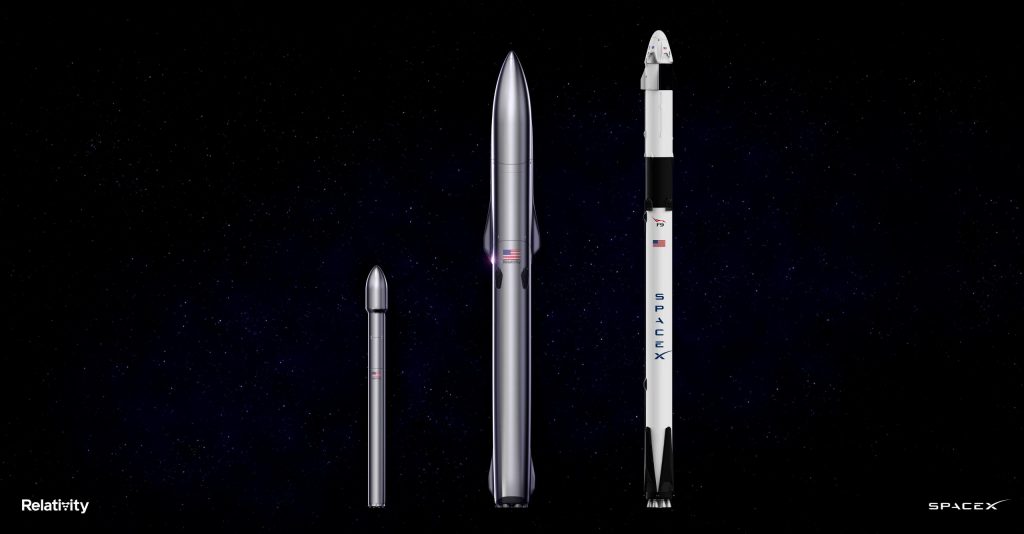
Ultimately, Relativity’s goal is to launch Terran R, a much larger, more powerful, and (in theory) fully-reusable rocket. Ellis stated that both the first and second stages of Terran R will be reusable, potentially allowing the rocket to directly compete with Falcon 9 – and maybe even the company’s fully-reusable Starship. SpaceX’s workhorse rocket has successfully launched 142 times and the company appears to be more confident in it than ever before. In 2022 alone, SpaceX hopes to launch an average of one Falcon rocket per week.
Despite the fact that SpaceX successfully landed its first Falcon booster in 2015 and reused a booster on a commercial launch in 2017, traditional competitors like Arianespace and ULA have done little to respond and continue to develop new rockets – Vulcan Centaur and Ariane 6 – that are fully expendable, substantially more expensive than SpaceX’s offerings, and still without a clear path to reusability. Alongside Blue Origin’s New Glenn vehicle and Rocket Lab’s Neutron, Relativity’s Terran R rocket may actually be able to compete with Falcon 9.
Ellis further revealed that Terran R already has at least one signed customer, with many others expressing interest behind the scenes. Though the company’s official timeline is incredibly ambitious, Relativity says Terran R could launch as early as 2024, giving the company less than three years to develop the giant rocket from scratch.
It is still unclear how either stage of Terran R will be recovered, nor how the rocket will integrate into the already existing launch facilities being built for Terran 1 at the Cape Canaveral Space Force Station’s (CCSFS) LC-16 pad. Nonetheless, Ellis and the entire Relativity team seem determined to deliver on their promises. Ellis didn’t shy away from bold and undeniable claims, either, stating that “we are definitely launching this year.” “I have no doubt about that…at this point, barring an act of nature or something going seriously wrong in stage testing.”

News
Tesla Europe rolls out FSD ride-alongs in the Netherlands’ holiday campaign
The festive event series comes amid Tesla’s ongoing push for regulatory approval of FSD across Europe.
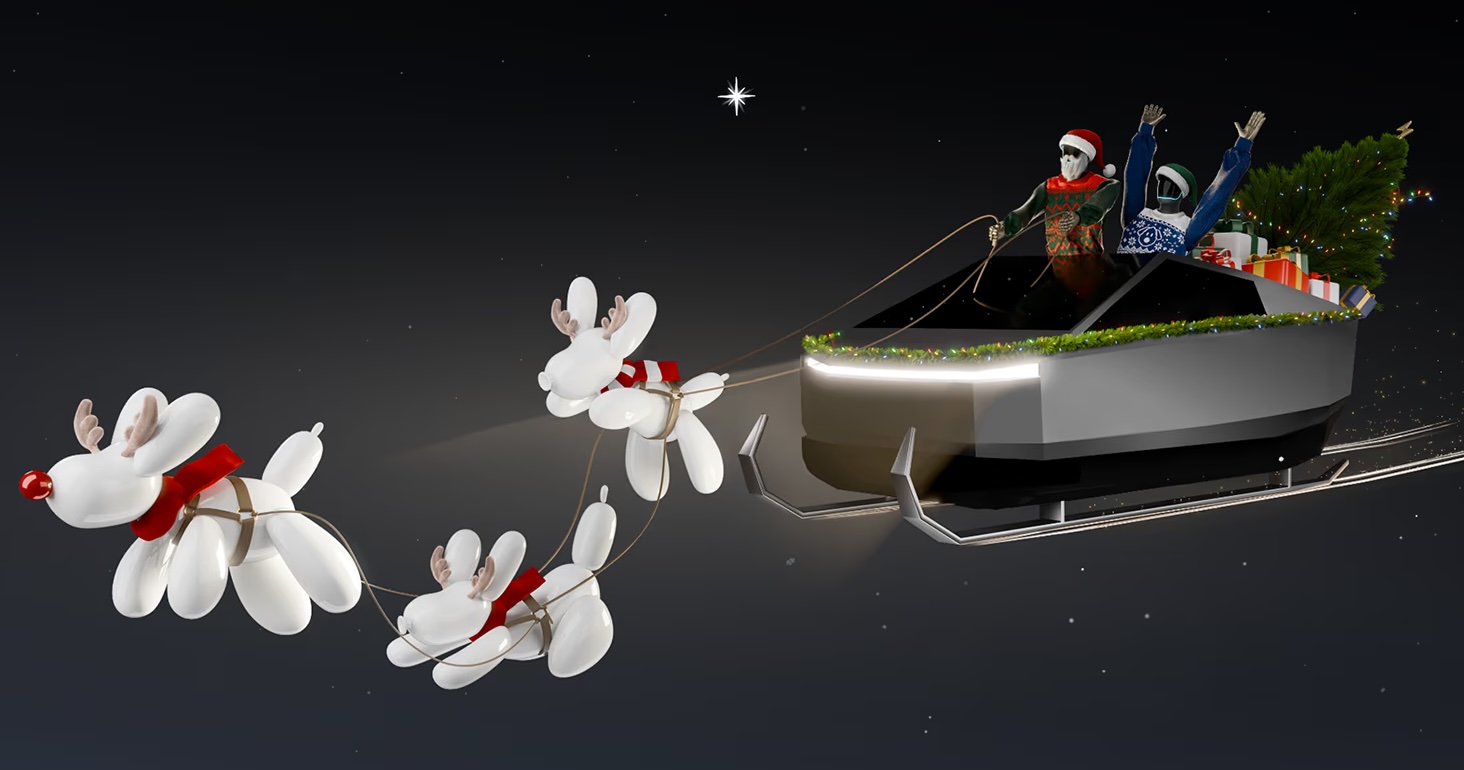
Tesla Europe has announced that its “Future Holidays” campaign will feature Full Self-Driving (Supervised) ride-along experiences in the Netherlands.
The festive event series comes amid Tesla’s ongoing push for regulatory approval of FSD across Europe.
The Holiday program was announced by Tesla Europe & Middle East in a post on X. “Come get in the spirit with us. Featuring Caraoke, FSD Supervised ride-along experiences, holiday light shows with our S3XY lineup & more,” the company wrote in its post on X.
Per the program’s official website, fun activities will include Caraoke sessions and light shows with the S3XY vehicle lineup. It appears that Optimus will also be making an appearance at the events. Tesla even noted that the humanoid robot will be in “full party spirit,” so things might indeed be quite fun.
“This season, we’re introducing you to the fun of the future. Register for our holiday events to meet our robots, see if you can spot the Bot to win prizes, and check out our selection of exclusive merchandise and limited-edition gifts. Discover Tesla activities near you and discover what makes the future so festive,” Tesla wrote on its official website.
This announcement aligns with Tesla’s accelerating FSD efforts in Europe, where supervised ride-alongs could help demonstrate the tech to regulators and customers. The Netherlands, with its urban traffic and progressive EV policies, could serve as an ideal and valuable testing ground for FSD.
Tesla is currently hard at work pushing for the rollout of FSD to several European countries. Tesla has received approval to operate 19 FSD test vehicles on Spain’s roads, though this number could increase as the program develops. As per the Dirección General de Tráfico (DGT), Tesla would be able to operate its FSD fleet on any national route across Spain. Recent job openings also hint at Tesla starting FSD tests in Austria. Apart from this, the company is also holding FSD demonstrations in Germany, France, and Italy.
News
Tesla sees sharp November rebound in China as Model Y demand surges
New data from the China Passenger Car Association (CPCA) shows a 9.95% year-on-year increase and a 40.98% jump month-over-month.
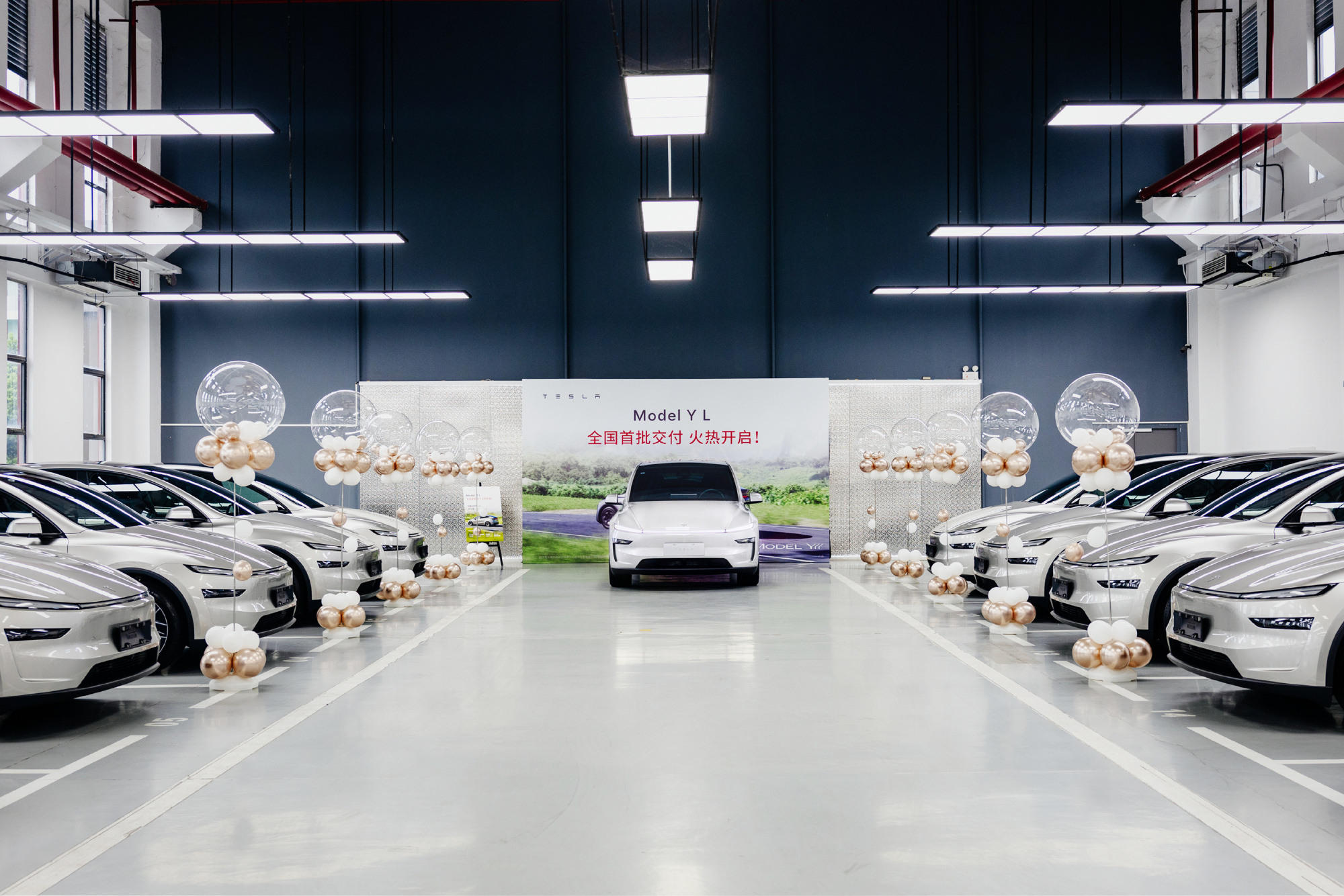
Tesla’s sales momentum in China strengthened in November, with wholesale volumes rising to 86,700 units, reversing a slowdown seen in October.
New data from the China Passenger Car Association (CPCA) shows a 9.95% year-on-year increase and a 40.98% jump month-over-month. This was partly driven by tightened delivery windows, targeted marketing, and buyers moving to secure vehicles before changes to national purchase tax incentives take effect.
Tesla’s November rebound coincided with a noticeable spike in Model Y interest across China. Delivery wait times extended multiple times over the month, jumping from an initial 2–5 weeks to estimated handovers in January and February 2026 for most five-seat variants. Only the six-seat Model Y L kept its 4–8 week estimated delivery timeframe.
The company amplified these delivery updates across its Chinese social media channels, urging buyers to lock in orders early to secure 2025 delivery slots and preserve eligibility for current purchase tax incentives, as noted in a CNEV Post report. Tesla also highlighted that new inventory-built Model Y units were available for customers seeking guaranteed handovers before December 31.
This combination of urgency marketing and genuine supply-demand pressure seemed to have helped boost November’s volumes, stabilizing what had been a year marked by several months of year-over-year declines.
For the January–November period, Tesla China recorded 754,561 wholesale units, an 8.30% decline compared to the same period last year. The company’s Shanghai Gigafactory continues to operate as both a domestic production base and a major global export hub, building the Model 3 and Model Y for markets across Asia, Europe, and the Middle East, among other territories.
Investor's Corner
Tesla bear gets blunt with beliefs over company valuation

Tesla bear Michael Burry got blunt with his beliefs over the company’s valuation, which he called “ridiculously overvalued” in a newsletter to subscribers this past weekend.
“Tesla’s market capitalization is ridiculously overvalued today and has been for a good long time,” Burry, who was the inspiration for the movie The Big Short, and was portrayed by Christian Bale.
Burry went on to say, “As an aside, the Elon cult was all-in on electric cars until competition showed up, then all-in on autonomous driving until competition showed up, and now is all-in on robots — until competition shows up.”
Tesla bear Michael Burry ditches bet against $TSLA, says ‘media inflated’ the situation
For a long time, Burry has been skeptical of Tesla, its stock, and its CEO, Elon Musk, even placing a $530 million bet against shares several years ago. Eventually, Burry’s short position extended to other supporters of the company, including ARK Invest.
Tesla has long drawn skepticism from investors and more traditional analysts, who believe its valuation is overblown. However, the company is not traded as a traditional stock, something that other Wall Street firms have recognized.
While many believe the company has some serious pull as an automaker, an identity that helped it reach the valuation it has, Tesla has more than transformed into a robotics, AI, and self-driving play, pulling itself into the realm of some of the most recognizable stocks in tech.
Burry’s Scion Asset Management has put its money where its mouth is against Tesla stock on several occasions, but the firm has not yielded positive results, as shares have increased in value since 2020 by over 115 percent. The firm closed in May.
In 2020, it launched its short position, but by October 2021, it had ditched that position.
Tesla has had a tumultuous year on Wall Street, dipping significantly to around the $220 mark at one point. However, it rebounded significantly in September, climbing back up to the $400 region, as it currently trades at around $430.
It closed at $430.14 on Monday.









